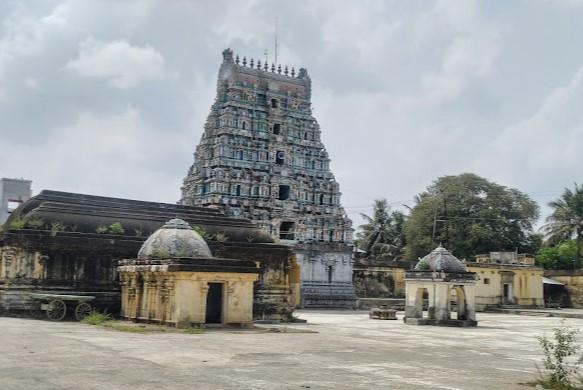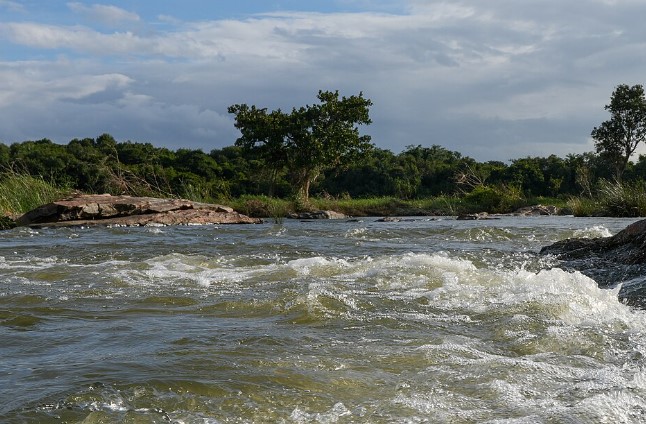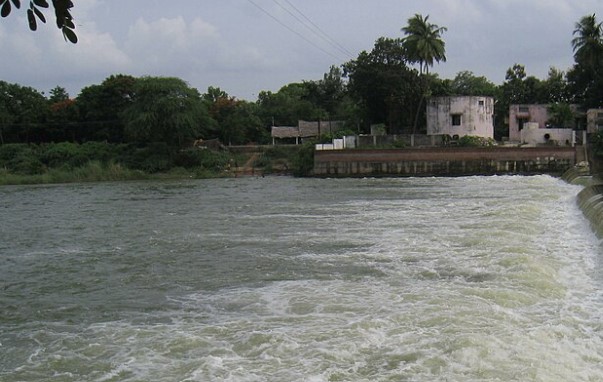- The Mahakalanathar Temple, located in Thirumakalam within the Tiruvarur district of Tamil Nadu, is one of the revered 276 Devara Paadal Petra Shiva Sthalams and is recognized as the 55th Shiva Sthalam on the southern bank of the river Cauvery in Chozha Nadu.
- The presiding deity, Lord Shiva, is worshipped as Mahakalanathar, and his consort is Bayakshambikai.
- This temple is noted for its unique features, including a self-manifested Shiva linga (Swayambumurthi), a five-tiered Rajagopuram (main tower), and two corridors.
- It is one of the 70 Maadak Koils built by King Kochengat Cholan. The temple is particularly significant as the birthplace of Saint Somayaji Mara Nayanar, one of the 63 Nayanmars, known for his popular "Soma Yagna."
- The temple is surrounded by the Thirumakalam Mahakala theertham, and the sacred tree (Thala Virutcham) is the Marudham.
- Historically, this temple has been glorified in the early mediaeval Thevaram poems by the Tamil Saivite Nayanar Thirugnanasambandar, who is recorded in Periyapuranam as having visited the temple after worshipping at Thirupugalur.
- The last Kumbabishekam (consecration ceremony) took place on April 24, 2011, with previous ceremonies held on May 18, 1998, and September 12, 1960.
- The place is also known as Ambar Maakaalam and is recognized as the 172nd Thevara Paadal Petra Shiva Sthalam, continuing to attract devotees and pilgrims alike.
HISTORY:
- This ancient temple is situated on the northern banks of the river Arasalaru. As per the stone inscriptions available in this temple, the temple was first built in the 12th Century AD by King Kulothunga Cholan-I and later extended by King Vikrama Cholan.
- The historical names of this place are Marapuri and Indirapuri.
PURANIC SIGNIFICANCE:
Somasimarar Nayanmar:
- Somasimarar, one among the celebrated 63 Nayanmars, was residing here with his wife Susheelai.
- He wanted to conduct the Soma Yajna and aspired that Lord Shiva himself should be present in the Yaga sala to accept the Havir Baga the fruits of the yajna.
- To invite the Lord, it was necessary to secure the help of Saint Sundarar who was suffering from coughing then.
- To cure him of the coughing, Nayanar sent herbal leaves called Thoodhuvalai Keerai every day.
- Sundarar did not know who sent the medicine to him but his spouse Sangiliar knew the person.
- When relieved, Sundarar came to see Somasiar to thank him.
- Somasiar sought the help of Sundarar to get Lord to be present in his Yajna and Sundarar was too happy to take up the mission and secured the consent of Lord. Lord promised to be present on the Ayilya star day in Vaikasi (May-June).
- As Lord Himself would be attending the yajna, Vedic scholars, sages from all corners gathered at the yajna spot.
- Lord came there as a low caste born with four dogs representing four Vedas and a dead calf.
- He was accompanied by Mother Parvathi, Vinayaka and Muruga.
- As a Neecha-low born appeared there, all were afraid that there was something seriously wrong in the procedures of Yajna.
- Lord Vinayaka appeared in his true form and told Somasiar that the visitor was no less a person than Lord Shiva himself.
- Somasiar’s joy knew bounds.
- He did all honours to Lord Shiva Thyagaraja and offered the Havir Bagha.
- Lord left his Neecha form and granted darshan to Somasiar with Mother Parvathi and made him one among the Nayanmars.
Parvathi killing Amban and Ambarasuran:
Two demons, Amban and Ambarasuran planned to wed Mother Parvathi. Knowing their plan, Mother took the form of Kali and destroyed them. She thus incurred the sin Brahmahatti Dosha. To relieve herself from the sin, she installed a Shivalinga here and performed archanas with Vilwa leaves. As Kali performed Shiva Puja here, the Lord is known as Makalanathar.
Practice of offering two garlands to Mother:
Sage Madanga Maharishi sought child boon from Lord Shiva. He was blessed with a girl child and was named Rajamadangi. When she grew, the Lord appeared before her and asked about her wish. Rajamadangi said that she wanted to be with him in Wedding form. Based on this event, those facing delays in wedding offer two garlands to Mother and then wear one of them on self.
Lord Vinayaka with a human face:
Lord Vinayaka with a human face and Adhi Skanda grace the devotees in the temple. As Lord Vinayaka came here to take part in the yajna of Somasiar with a human face, it is said that he had stayed here in the same form.
Authority of deciding the longevity of people:
Lord Makaleswara in the temple is believed to be the authority to decide the longevity of people. People pray for longevity here and also Lord Shiva in Ujjain and in Irumbai near Villupuram.
PURANIC SIGNIFICANCE 2:
Goddess Kaali
The legend of this temple concerns the two sons of Sage Dhurvasa, Ambasuran and Amban. Both these brothers were ardent Shiva devotees and were blessed with various powers by Lord Shiva. However, they started misusing their powers by terrorising the common people. They were vanquished by Goddess Kaali here upon Lord Shiva’s instructions. Goddess Kaali took the form of a beautiful girl and was accompanied by Lord Mahavishnu who took the guise of an old man. On seeing the girl, both these brothers started fighting with each other on who would get to marry her. In their fight, the elder brother Ambasuran was killed and Goddess Kaali vanquished the younger one. The place where the younger brother Amban was killed is known as “Ambakarathur”. This is very near to Ambal.
To seek relief from the “Brahmahathi dosha” (the sin accrued by killing a person), Goddess Kaali is believed to have installed a small lingam that she made with her own hands and worshipped it in this place. Hence this place gets the name Ambar Maakaalam.
Sage Madanga Maharshi
Another legend is that Sage Madanga Maharshi worshipped the lord here seeking child boon. He was blessed with a girl child and she was named Rajamadangi. When the girl attained the marriageable age, it is believed that Lord Shiva appeared before her and married her. When the lord asked her if she had any wish, she replied that she wanted to be with him here in the wedding form. She also requested the lord to grant the boon of wedding to those who come here and pray. The lord granted her wish. Based on this event, those facing delays in their marriage proposals can visit this place, offer two garlands to Goddess Parvathy and then take back one for themselves. It is believed that by doing so for five consecutive weeks, obstacles in marriage proposals will be removed.
Sage Maakaala Maharishi
Another legend associated with this place is that of Sage Maakaala Maharishi. It is believed that he worshipped the lord here due to which this place gets the name Maakaalam and the lord is praised as “Sri Maakaalanathar”.
It is believed that there are three places where Sage Maakaala Maharishi installed a Shivalingam and worshipped Lord Shiva. They are -Ambar Maakaalam, Irumbai Maakaalam near Puducherry and Mahaakaal in Ujjain, Madhya Pradesh.
Vimalan of Kasi (Banaras)
As per the sthala purana, it is believed that a brahmin by the name of Vimalan lived in Kasi. He did not have a child. Despite visiting various temples and praying to Lord Shiva, he was not blessed with a child. He started his pilgrimage to the southern part of India and visited various temples with the same goal. One day Lord Shiva appeared before him in the guise of an old man and asked him where he was going. Vimalan told him about his desire. The old man suggested that he go to this temple (Koil Thirumalam) and worship Sri Makalanathar. He further informed him that in this temple he can find Lord Vinayakar and Lord Murugan as young children. Further Lord Vinayakar of this temple has a human head. The old man told Vimalan to worship these lords as well. He also told him that he would be blessed with a male child and that he should name him as Mahadevan. Vimalan visited this temple, worshipped the lords and was blessed with a child.
Saint Somasimara Nayanar
- This is the birth place of Saint Somayaji Mara Nayanar (Somasi Mara Nayanar). Saint Somasimarar was praised by Saint Sundaramurthy Nayanar as “Ambaran Somasi Maranukkum adiyen” in his “Thiruthondar Thogai”. He lived in this place with his wife Susheela and was fond of offering food to devotees of Lord Shiva.
- He wanted to conduct a big “Soma yagna” here and wanted to invite Lord Thiyagaraja of Thiruvarur. He knew that the only person who could bring the lord to the yagna was Saint Sundarar. Incidentally, Saint Sundarar was on his pilgrimage and was staying in this place itself. When Somasimarar went to visit Sundarar, he came to know that Sundarar was suffering from a cough and cold. He started sending “Thoodhuvalai” (an herbal plant) every day to Sundarar. When Sundarar got cured of his illness, he came to see Somasimarar to thank him. Somasimarar sought the help of Sundarar to bring Lord Shiva to his proposed Yajna. Sundarar agreed to take up the task and convinced Lord Shiva to participate in the yagna.
- When the news spread that the lord himself would be attending the yajna, many people including Vedic scholars and sages gathered at the place of the yajna. Lord Shiva is believed to have appeared in the guise of a hunter (Sandalan in Tamil) with four dogs following him and a dead calf on his shoulder. He was accompanied by Goddess Parvathi in the guise of a woman with a pot on her head. Vinayakar and Murugan came in the guise of young boys holding their mother’s hands. representing the four Vedas
- As an untouchable person appeared there, all the brahmins assembled there were afraid that something had gone wrong while conducting the Yajna. They started running away from the scene. But Somasimarar wholeheartedly welcomed the guests. Lord Vinayakar clandestinely indicated to Somasimarar about the true identity of the lord. He also said that the four dogs following the hunter represent the four vedas. Somasimarar and Sundarar worshipped the hunter, continued the yagna and offered “Avirbaham” (Prasad of the yagna) to the guests. Lord Shiva and Goddess Parvathy left the guise of the hunters and granted darshan to Somasimarar and Sundarar. The lord then blessed Somasimarar by naming him as one of his Nayanmars.
- There is a small shrine for this Vinayakar and he is praised as “Sri Achantheertha Vinayagar” (the one who cleared the doubts). Also, there is a small Mandapam (hall) where this Yagna is believed to have been conducted. These two structures can be seen in between Ambar Maakaalam and Ambar Perunthirukkovil.
- Every year a yagna is conducted here to commemorate this event. During this yagna, the noon time pooja is not performed at the Thyagaraja Temple in Thiruvarur. This is because the lord is believed to have come to this place instead.
Other Legends
SERPENT WORSHIP:
It is believed that Serpent Vasuki, one of the eight serpents (Ashta Nagams) visited this place and worshipped the lord to seek relief from Brahmahathi Dosham. “Naga Kannigai” (virgin serpent) is also believed to have worshipped the lord here. Another reason this place gets the name Makalam is that “Kalam” means serpent in Tamil.
SAGE VISHWAMITRA:
It is believed that once when Sage Vishwamitra was performing rigorous penance, the Devas decided to disrupt his “thapas” by instructing Manmathan to shoot an arrow at him. Angered by this, the sage cursed Lord Indira (head of Devas). Indira is believed to have worshipped the lord here to seek relief from this curse.
LORD INDRA:
- Another story associated with Lord Indira is that he visited this place after being defeated by Samharaseelan. He prayed to Lord Shiva here and sought his help. Lord Shiva took the form of Bairavar (Sattanathar) and destroyed Samharaseelan, thus reinstating Indira’s position.
- This place was considered to be one of the “Naimisaranyam” (peaceful places to perform penance). It is believed that Sages Vyasar, Dhurvasar and Saptarishies have worshipped the lord here.
ADMINISTRATION:
The exact name of the administration for the Sri Mahakalanathaswamy Temple at Ambar Maakaalam is typically the "Sri Mahakalanathaswamy Temple Devasthanam" or "Sri Mahakalanathar Temple Committee."


